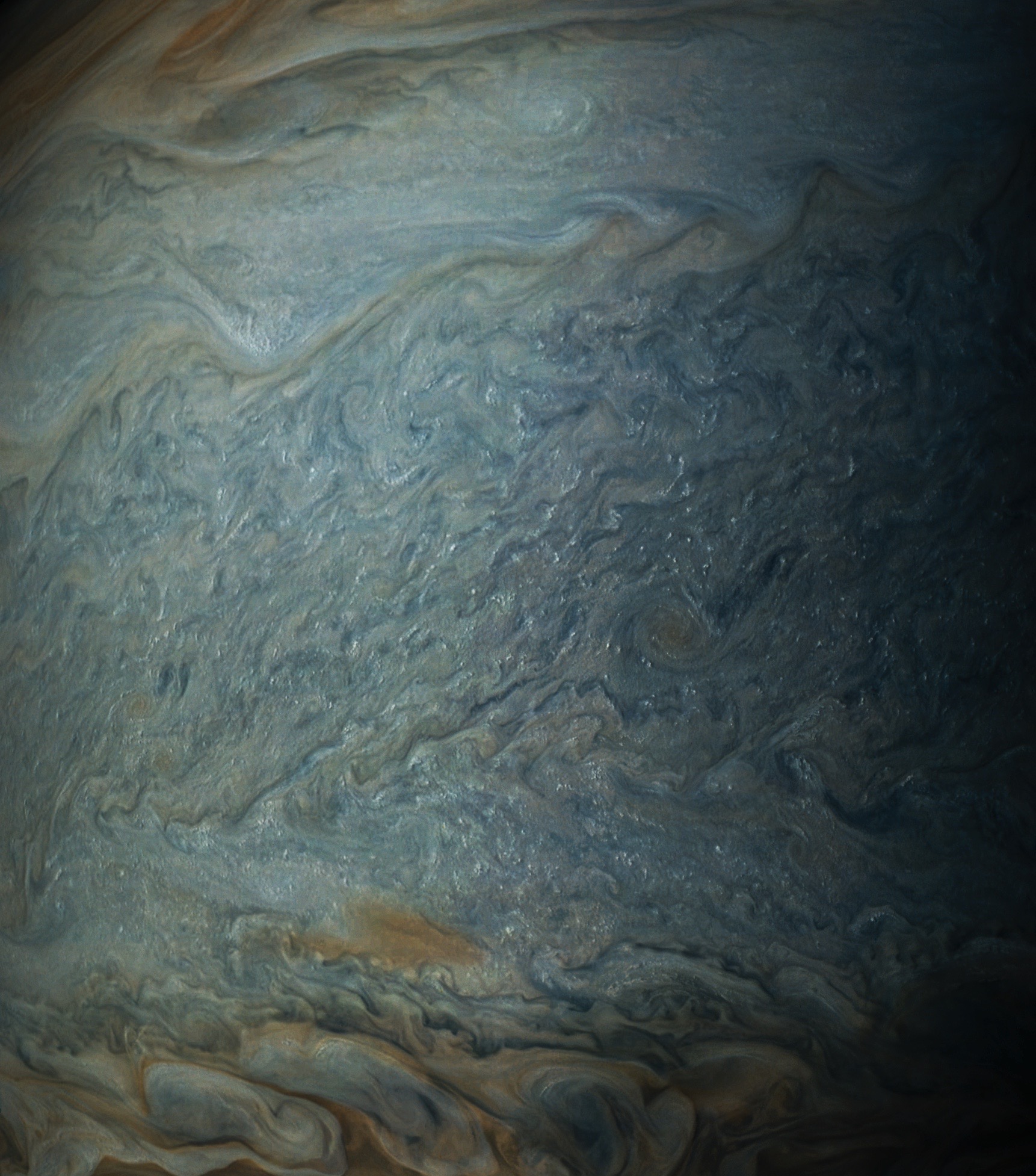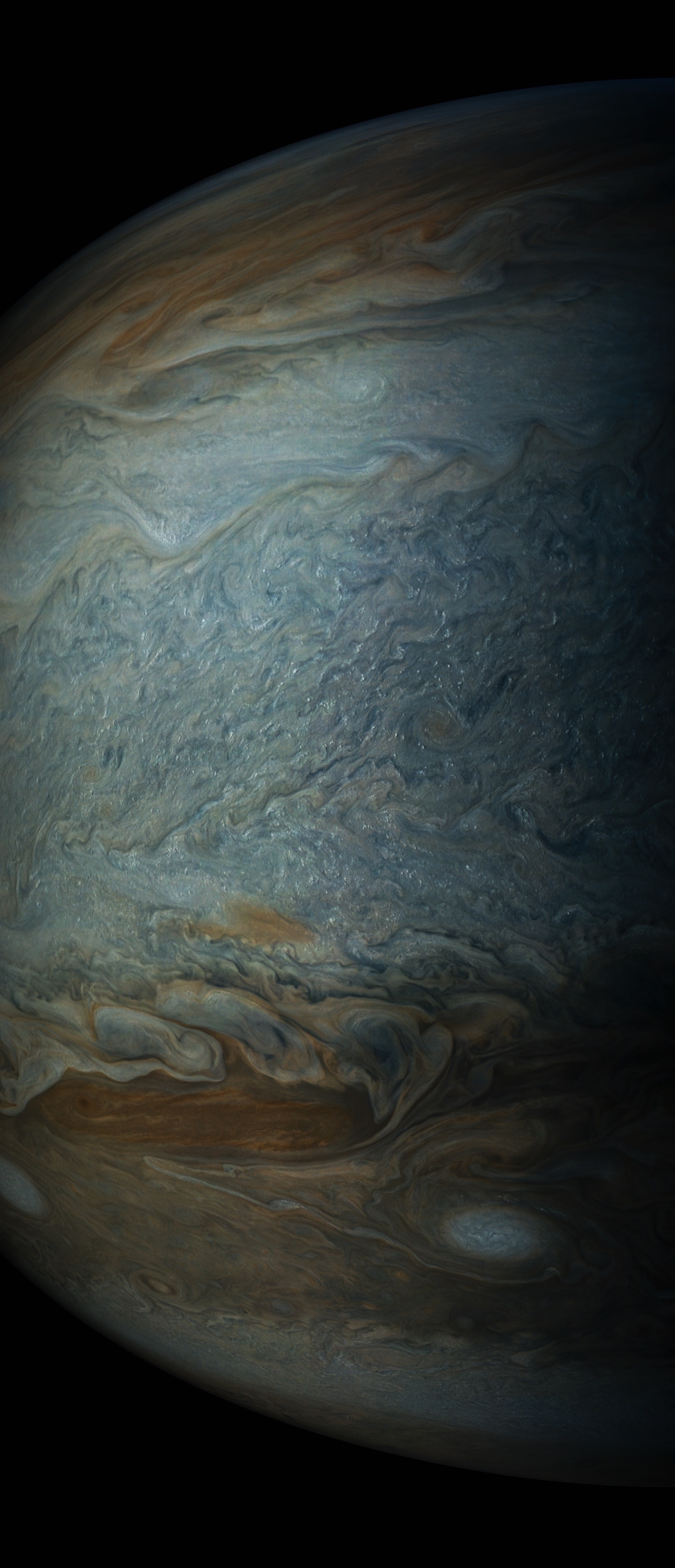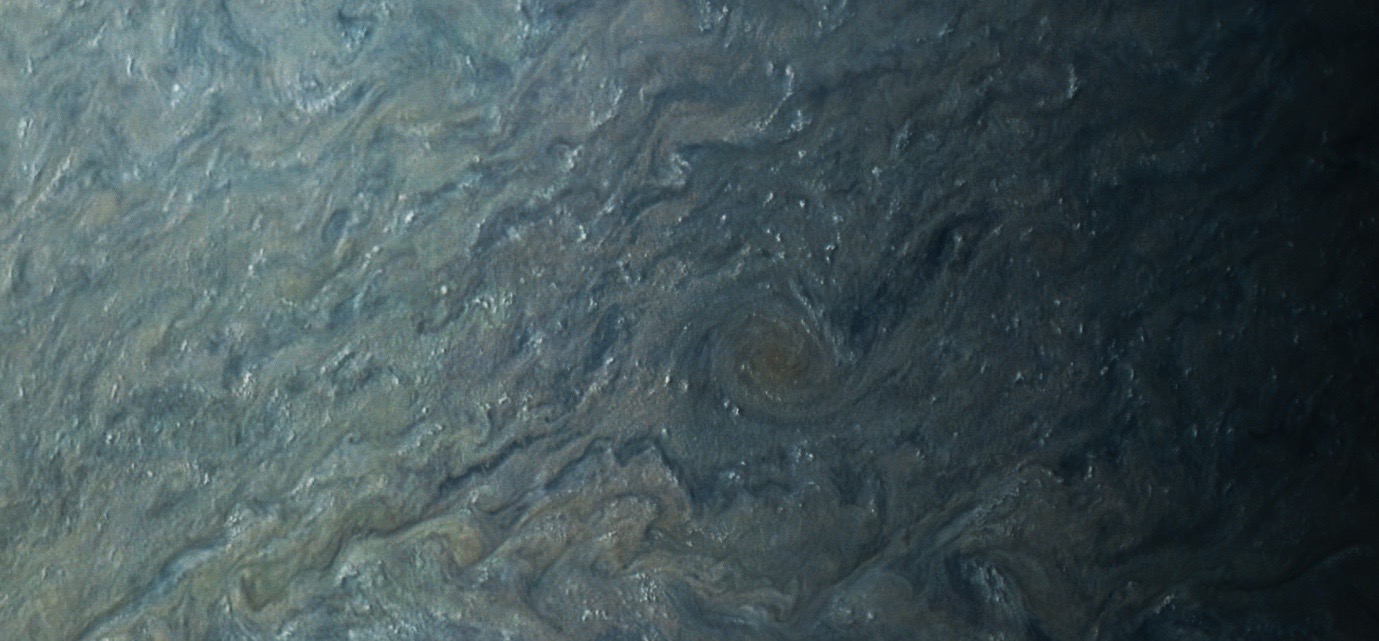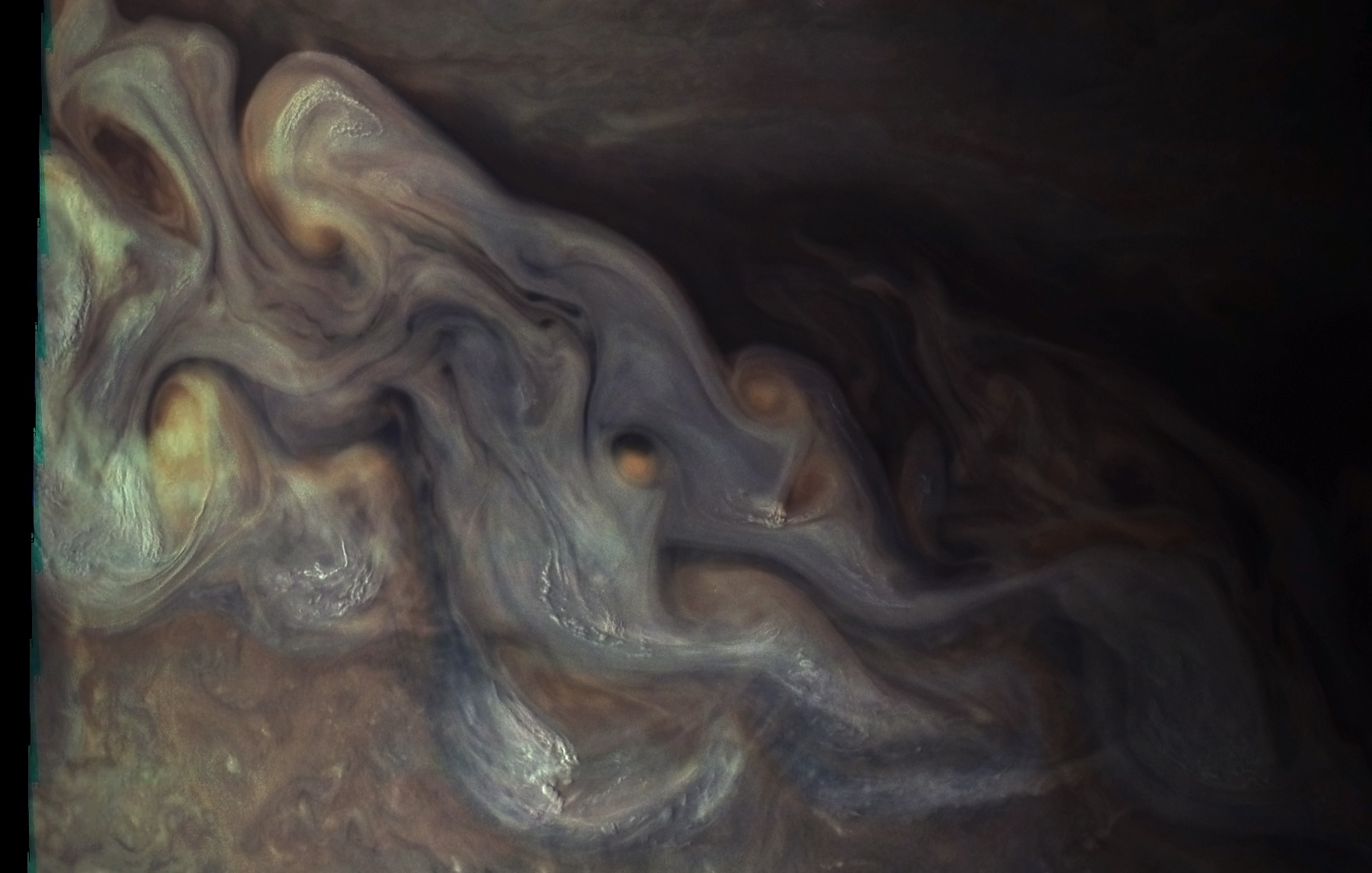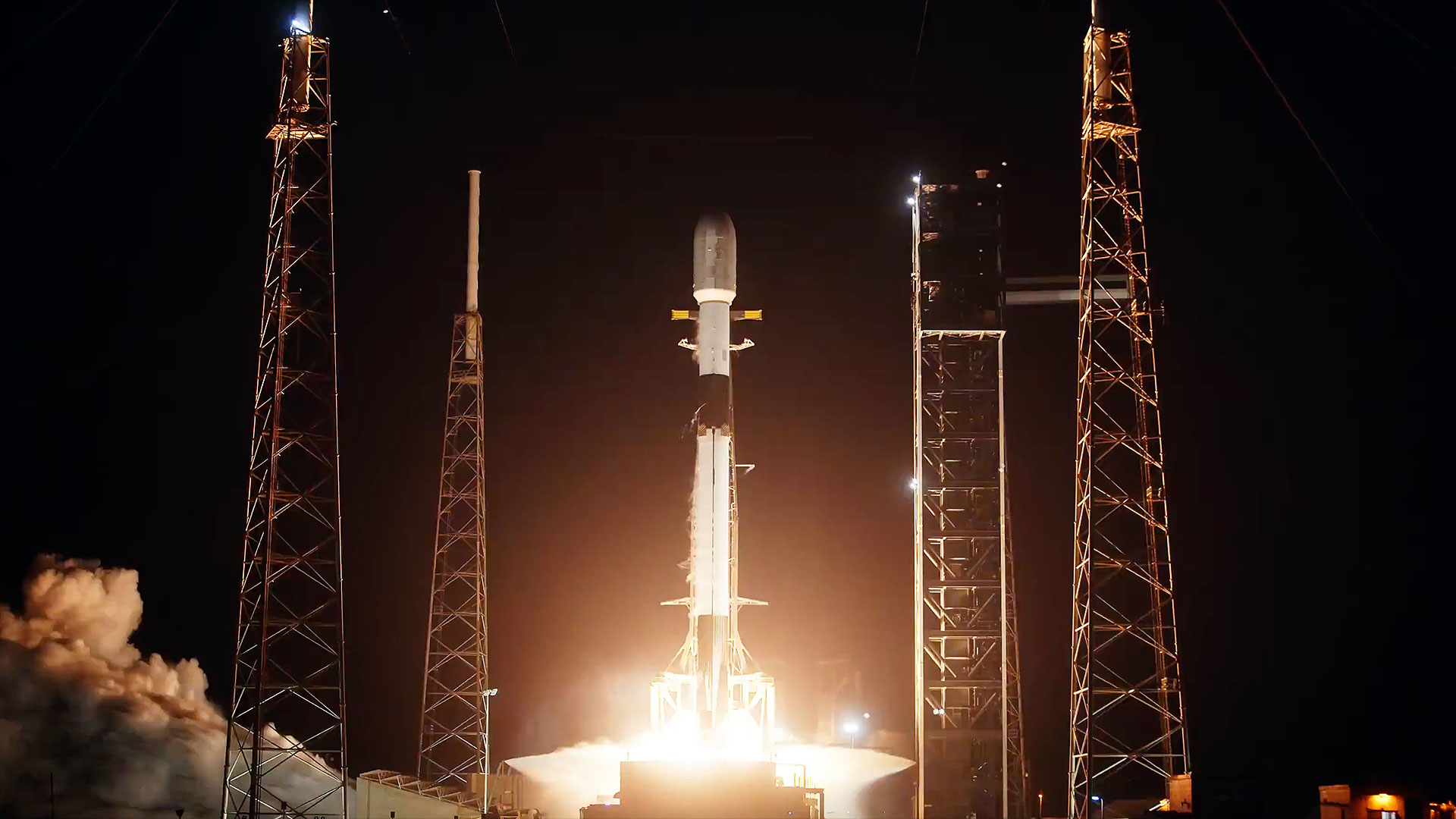'It's Snowing on Jupiter': Stunning Photos Show Clouds High in Gas Giant's Skies
Not all of Jupiter's clouds are huge, swirling, otherworldly beasts.
Spectacular new images captured by NASA's Jupiter-orbiting Juno spacecraft show fluffy-looking white clouds casting their comparably tiny shadows on the giant planet's monstrous, multicolored cloud decks.
The white clouds, which get up to 50 miles (80 kilometers) wide or so, are high up in Jupiter's atmosphere — so high that they're very cold, and the material they shed is therefore almost certainly frozen, Juno team members said.
"It's snowing on Jupiter, and we're seeing how it works," Juno principal investigator Scott Bolton, of the Southwest Research Institute in San Antonio, said during a news conference Thursday (May 25). [Related: New Mysteries at Jupiter]
"It's probably mostly ammonia ice, but there may be water ice mixed into it, so it's not exactly like the snow that we have [on Earth]," Bolton added. "And I was using my imagination when I said it was snowing there — it could be hail."
The $1.1 billion Juno mission launched in August 2011 and arrived in a highly elliptical orbit around Jupiter on July 4, 2016. The spacecraft's main mission involves characterizing the structure, composition, and gravitational and magnetic fields of Jupiter, to help scientists better understand how the giant planet formed and evolved.
Juno makes most of its measurements during close passes over Jupiter's poles that occur once every 53.5 Earth days. The probe has conducted five such data-collecting "perijove passes" so far, with the first occurring on Aug. 27, 2016.
Breaking space news, the latest updates on rocket launches, skywatching events and more!
The new photos were taken during the most recent close approach, which Juno completed on May 19.
Thursday's news conference focused mainly on the science results that the Juno team has been able to glean from the first few perijove passes. For example, Bolton and his colleagues discussed the surprising cyclones that Juno spotted near Jupiter's poles, the mysterious processes driving Jovian auroras and hints that the gas giant may have a large and "fuzzy," or partially dissolved, core, among other topics.
Follow Mike Wall on Twitter @michaeldwall and Google+. Follow us @Spacedotcom, Facebook or Google+. Originally published on Space.com.

Michael Wall is a Senior Space Writer with Space.com and joined the team in 2010. He primarily covers exoplanets, spaceflight and military space, but has been known to dabble in the space art beat. His book about the search for alien life, "Out There," was published on Nov. 13, 2018. Before becoming a science writer, Michael worked as a herpetologist and wildlife biologist. He has a Ph.D. in evolutionary biology from the University of Sydney, Australia, a bachelor's degree from the University of Arizona, and a graduate certificate in science writing from the University of California, Santa Cruz. To find out what his latest project is, you can follow Michael on Twitter.
